You’re searching for a Schwerin travel guide loaded with things to do in this scenic German gem. Perhaps you’ve seen pictures of a fairytale castle perched on a shimmering lake. Maybe you heard it’s brimming with rich history, tranquil gardens, and striking architecture.
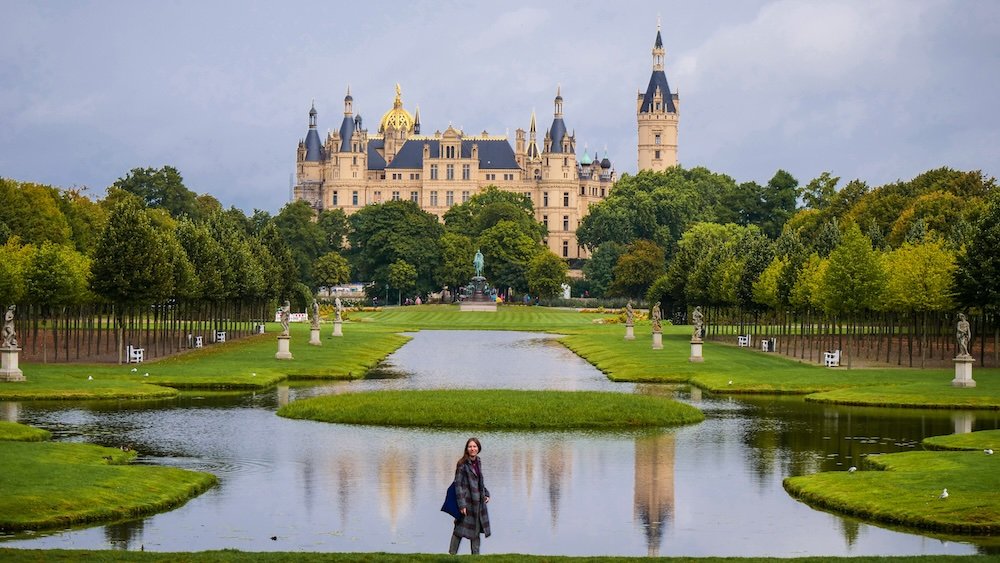
It can be daunting planning a Schwerin trip. You might wonder how many days to spend, which neighborhoods to prioritize, or how to get around this relatively small city. Maybe you’re unsure what local dishes to try or how to blend day trips into your itinerary. And you’d rather skip the stress of guesswork.
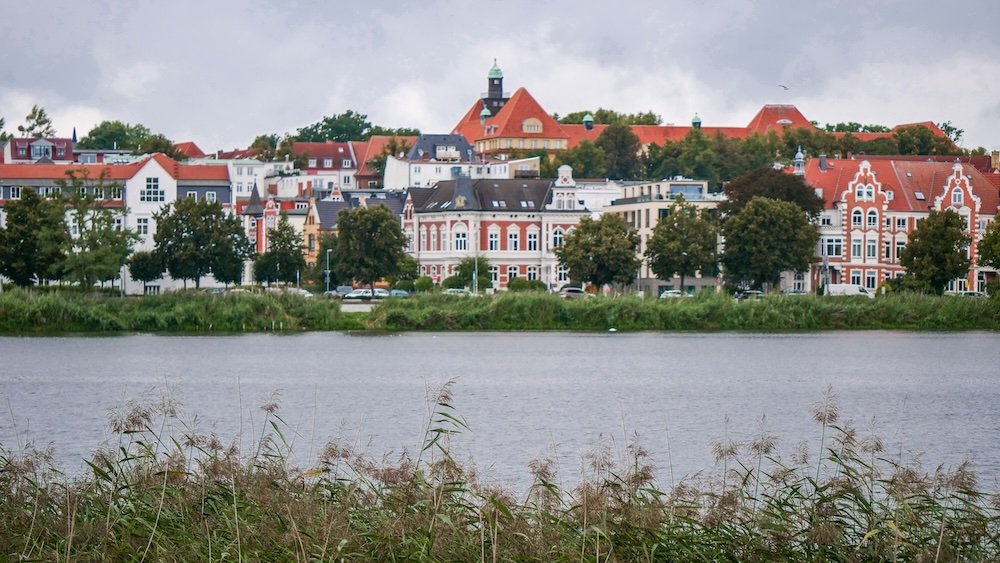
Why Schwerin?
This travel guide suits a range of folks. Couples seeking a romantic lakeside escape, families yearning for a calm break from big cities, or cultural enthusiasts wanting to explore charming castles and cathedrals. Even if you’re a backpacker passing through northern Germany, Schwerin’s calm vibe can be a refreshing detour.
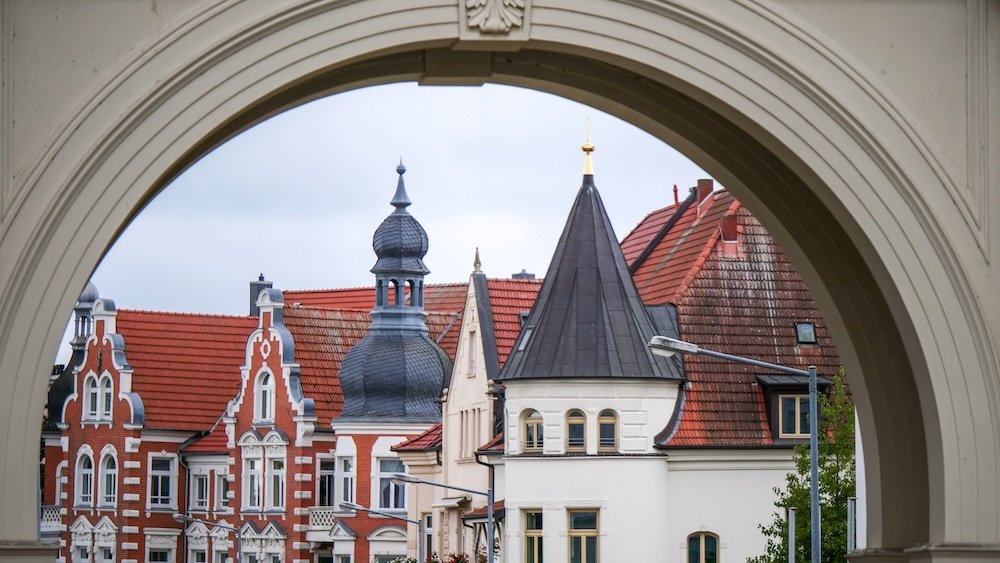
Picture yourself chatting on a lakeside bench, the Schloss (castle) in view. Birds chirp softly, and gentle waves lap the shore. Ready to jump in? Let’s explore the things to do that make Schwerin a hidden highlight of Germany.
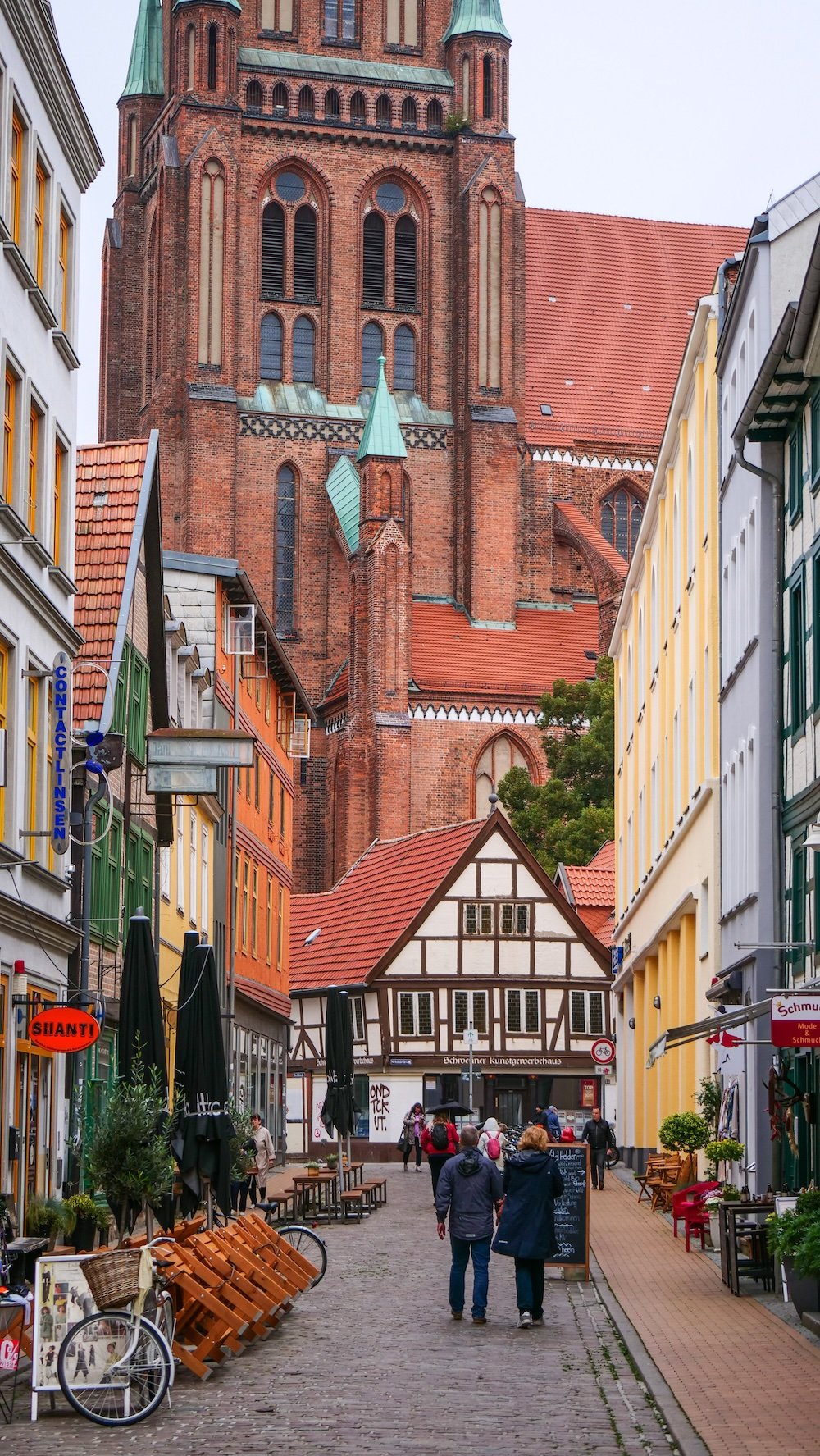
TOP 15 THINGS TO DO IN SCHWERIN, GERMANY FOR VISITORS
Let’s dive into 15 recommended activities. Some experiences revolve around history, others around outdoor escapes, and some feed your culinary cravings.
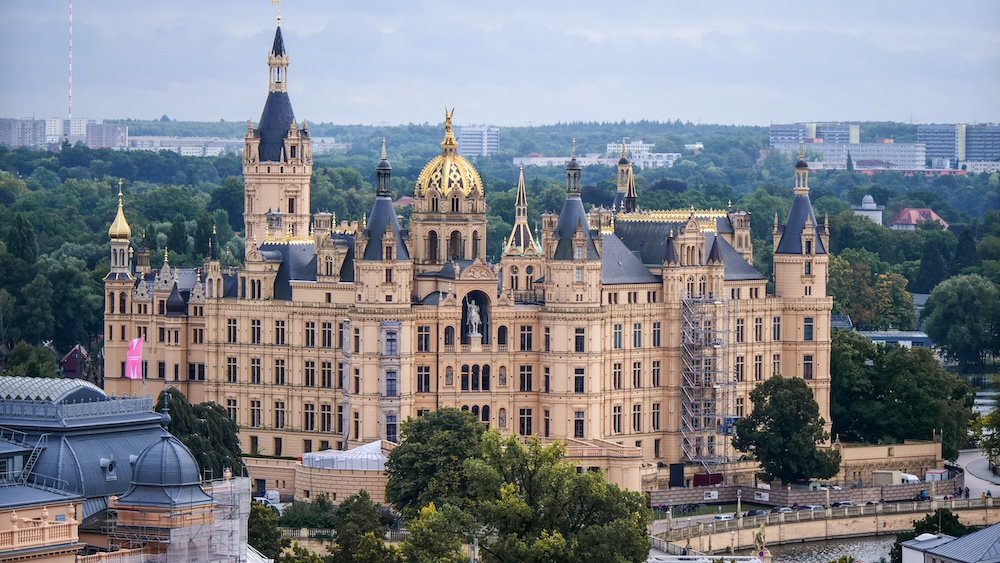
1) Marvel at Schwerin Castle (Schloss Schwerin)
Schwerin Castle is the city’s crown jewel, perched on an island in the main lake. Its turrets and golden domes glint in sunlight, invoking fairytale vibes. Inside, you’ll find sumptuously decorated rooms, swirling staircases, and a museum chronicling ducal heritage. The castle gardens unfold with manicured lawns, fountains, and picturesque walkways. Standing at the lakeside terrace, you might spot swans gliding by, completing the regal panorama. It’s a top draw for a reason—historical depth meets pure aesthetic charm.
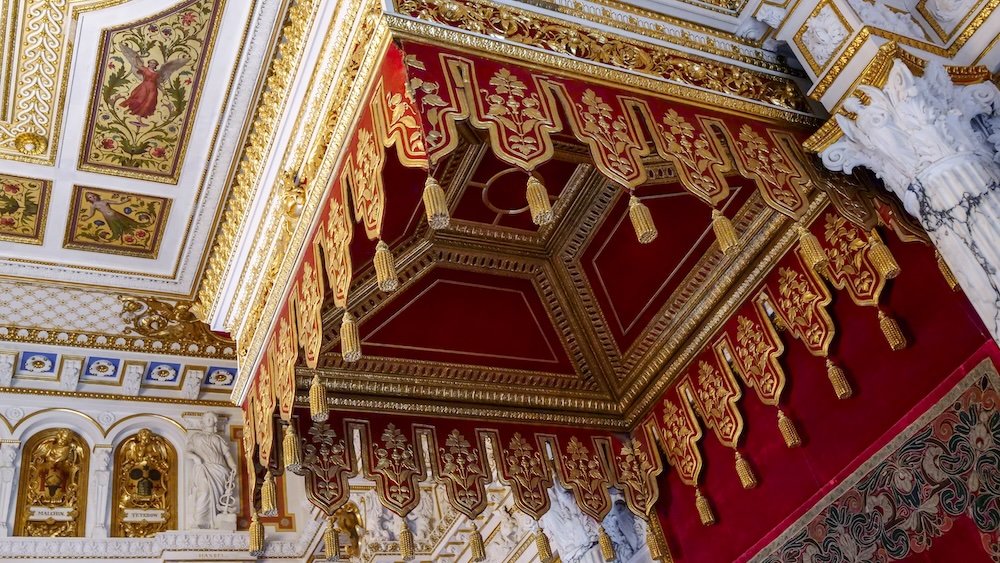
- Look for guided tours if you want deeper stories about the grand ducal family.
- The castle museum sometimes hosts rotating exhibits; check schedules online.
- There’s a small café nearby if you want coffee with a castle backdrop.
Tip: Head there early on weekdays to dodge bus tours and capture dreamy photos with minimal crowds.
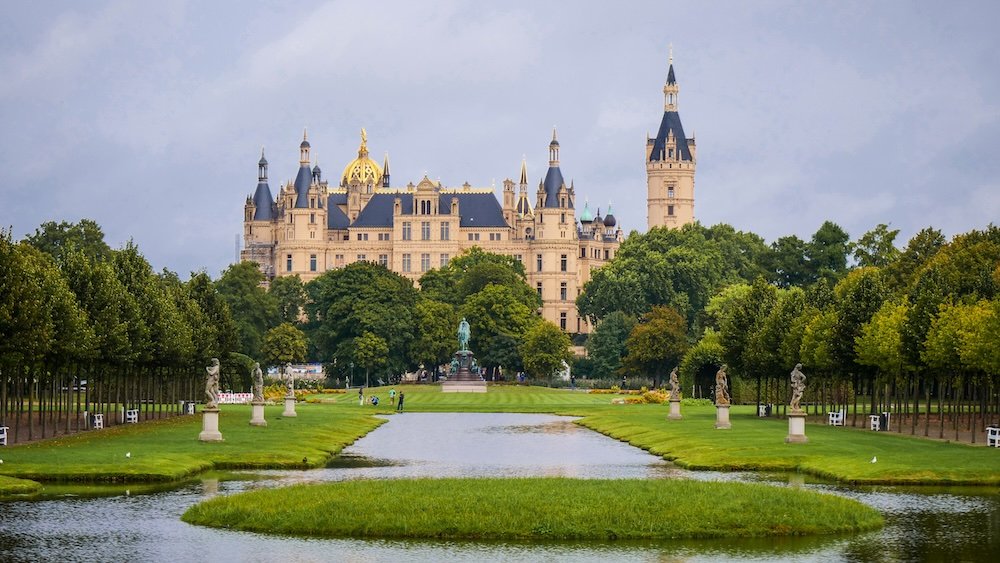
2) Stroll through the Castle Gardens (Burggarten)
Right next to the castle, the Castle Gardens create a lush extension of majesty. Tree-lined paths weave among flowering shrubs, decorative statues, and reflective ponds. Each season brings its own charm: spring blooms, summer greenery, autumn reds, or snowy winter quiet. A leisurely walk can calm the mind, allowing you to soak in subtle details like carved benches or hidden nooks. You might spot locals jogging, dog-walking, or simply enjoying nature. It’s free, open to all, and merges the castle’s grandeur with everyday city life.
- Bring a camera; the vantage points of the castle from various garden angles are stunning.
- If traveling with kids, they’ll love scurrying around open lawns or feeding ducks.
- Benches abound—perfect for a scenic rest stop.
Tip: Peek behind tall hedges—some smaller garden wings hide lesser-known sculptures or tranquil water features.
3) Visit the State Museum Schwerin (Staatliches Museum Schwerin)
The State Museum stands a stone’s throw from the castle, displaying impressive European art. You’ll find Dutch and Flemish paintings, German Romantic works, and modern pieces. Sculptures and decorative arts also play a role, weaving a tapestry of creativity across centuries. The building itself is a neoclassical marvel, housing grand halls that elevate each painting’s impact. Audio guides or short tours can deepen your appreciation. Perfect if you crave a cultural break from strolling outdoors.
- Check for temporary exhibits focusing on a particular artist or theme.
- The gift shop sells art prints and local crafts—ideal souvenirs for art lovers.
- Photography rules vary, so confirm at the entrance.
Tip: Rest in the museum café between galleries for a small snack or coffee, letting art impressions soak in.
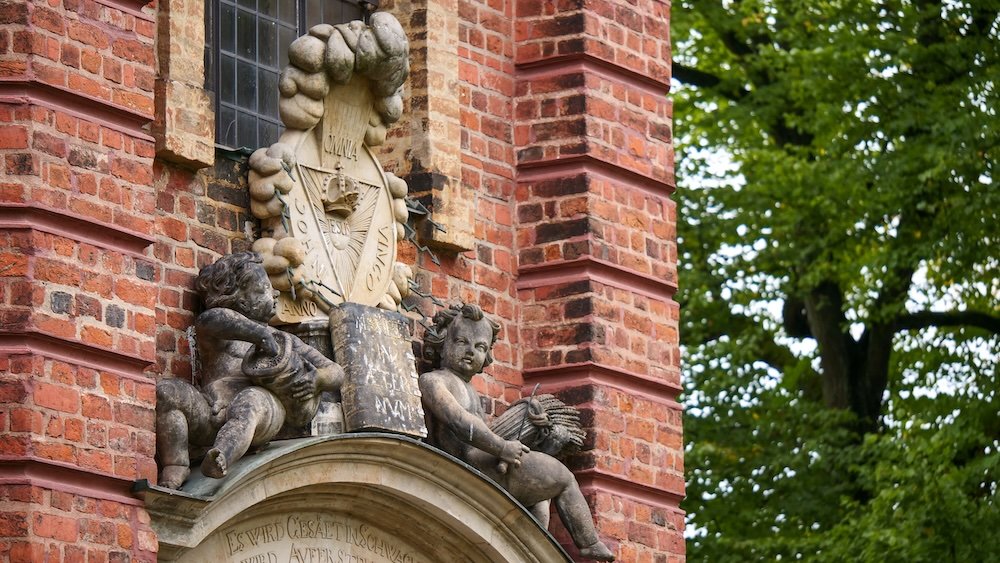
4) Explore Schwerin’s Old Town (Altstadt)
Schwerin’s Old Town brims with pastel-hued buildings, cobblestone streets, and quaint squares. Wandering these lanes reveals half-timbered houses, boutique shops, and cozy cafés. Locals might greet you with friendly nods, reflecting the town’s laid-back vibe. The historic market square often hosts events or weekend markets where you can browse fresh produce or crafts. Each corner yields fresh perspective: maybe a hidden courtyard, a tiny bookstore, or an inviting bakery. Embrace unhurried exploration—simply follow your curiosity.
- Keep an eye out for architectural plaques marking centuries of history.
- Many shops close early on Sundays, so plan your shopping accordingly.
- Street musicians sometimes grace the central squares with mellow tunes.
Tip: Grab an ice cream or pastry from a local bakery and wander with no fixed agenda—you might stumble upon local gems.
5) Stop by the Schwerin Cathedral (Schweriner Dom)
Towering over the Old Town, Schwerin Cathedral is a Gothic masterpiece. Its red brick exterior and spire evoke a sense of solemn grandeur. Inside, you’ll find soaring ceilings, intricate stained glass, and an aura of calm. Climb the tower if available—panoramic city and lake views await, though the staircase might be steep. Periodic organ concerts fill the nave with majestic sounds. It’s a spiritual and architectural highlight, bridging medieval tradition with living faith.
- Check service times if you’d like a quiet visit; you don’t want to disrupt a mass.
- Observe the details in the altarpiece—some are centuries old.
- In summer, volunteer guides might share historical anecdotes in English.
Tip: Attempt the tower climb on a clear day for expansive vistas of Schwerin’s many lakes.
6) See the Mecklenburg State Theatre (Mecklenburgisches Staatstheater)
Culture buffs shouldn’t miss the Mecklenburg State Theatre near the castle. The ornate facade hosts plays, operas, and ballet performances year-round. Even if you don’t speak German, some productions—especially ballets or musicals—are visually and musically captivating. The theater’s interior exudes classic opulence: velvet seats, gilded balconies, and sparkling chandeliers. Attending an evening show immerses you in local arts. If time is short, simply admire the building’s architecture from outside.
- Book tickets online in advance—popular shows can sell out.
- Dress codes vary; business casual or smart outfits fit well.
- Sometimes they have guided behind-the-scenes tours—check the schedule.
Tip: Skim a short synopsis if watching a German play—understanding the plot helps you connect with the on-stage drama.
7) Stroll the Pfaffenteich Waterfront
Pfaffenteich is a picturesque lake near the Old Town. Its promenade invites you to meander, feed ducks, or just relish reflections of the city skyline. The tranquil water often mirrors pastel sunsets, perfect for evening photography. Locals jog or cycle around the perimeter, while kids toss bread crumbs to swans. Cafés with lakeside terraces beckon you for a cappuccino or wine. It’s a relaxed environment that showcases Schwerin’s synergy of nature and urban life.
- Fishing is sometimes allowed on designated spots—watch enthusiasts cast lines.
- If you’re into fitness, a brisk walk around the lake can be refreshing.
- Benches dot the shore, ideal for quiet reading or daydreaming.
Tip: Try a local pastry from a nearby bakery and savor it along the water—simple joys define this city’s vibe.
8) Check Out the Mecklenburg-Vorpommern State Parliament
Located within parts of the castle complex, the Mecklenburg-Vorpommern State Parliament merges politics and history. The grand rooms reflect centuries-old ducal splendor, now repurposed for modern governance. You won’t wander the chambers freely, but guided tours sometimes highlight the region’s political evolution. The contrast between antique corridors and new legislative activity is fascinating. If you’re curious about German state politics, it’s a unique angle. It also adds depth to your castle visit—beyond the tourist façade.
- Inquire at the visitor center about open-house days or special events.
- Keep noise levels down in official areas—people might be working.
- Photography might be limited inside parliamentary sections.
Tip: Combine a quick peek here with the main castle museum to fully appreciate how tradition blends with contemporary structures.
9) Snap Photos at the Siegessäule (Victory Column)
Standing in front of the castle, the Siegessäule commemorates historical victories. Surrounded by lush greenery, it’s a prime vantage point for capturing the castle’s silhouette. The column’s classical design plus the shimmering lake in the backdrop create striking compositions. Photographers often angle the lens to incorporate statue details and lake reflections. Even for casual phone shots, the interplay of water and architecture is mesmerizing. It’s a quick yet rewarding stop.
- Mornings or late afternoons yield softer light.
- If there’s recent rain, puddles on the ground might reflect the column or castle, doubling the effect.
- Consider wide-angle lenses if you want the entire scene in one frame.
Tip: Position yourself at different vantage points—sometimes even a few steps left or right can transform your shot dramatically.
10) Enter the Old Orangerie in the Castle Gardens
In the Castle Gardens, you’ll find the Old Orangerie, once used for wintering exotic plants. Today, it might host small exhibitions or events, adding historical flair. The elegant greenhouse vibe, with tall windows and stone arches, channels times when dukes cultivated citrus or exotic blooms. Even if it’s closed, admiring the facade can be a treat. It’s a lesser-known corner compared to the main castle route, often quieter. A short detour reveals how gardening culture thrived centuries back.
- Sometimes it’s rented for weddings—imagine an aristocratic ambiance in photos.
- The building’s signage occasionally details horticultural heritage.
- Surrounding lawns often bloom with seasonal flowers.
Tip: Wander behind the Orangerie—some narrower garden paths lead to hidden benches or scenic lake glimpses.
11) Learn Local History at the Schelfkirche (St. Nicolai Church)
Outside the central cluster stands Schelfkirche St. Nicolai, a historically significant baroque church. Its understated exterior contrasts with a warm interior featuring high ceilings and simple yet graceful design. Local stories say past dukes financed partial restorations, weaving noble family ties. Occasionally, classical concerts echo through the nave, giving you a cultural treat. Visitors sense a community vibe, as the neighborhood uses it for gatherings. It offers a quieter spiritual dimension compared to the main cathedral.
- Check opening hours—sometimes it’s locked outside service times.
- If open, slip in quietly to respect worshipers or visitors seeking calm.
- The organ’s deep timbre can resonate beautifully if you catch a practice session.
Tip: Read posted bulletins or brochures for upcoming music recitals—these intimate church settings can be magical.
12) Cross the “Schlossbrücke” (Castle Bridge)
Leading to the castle island, the Schlossbrücke frames lake views on both sides. Once you step on the bridge, the castle’s majestic facade looms closer, intensifying the sense of arrival. Swans gliding below add storybook charm. Many visitors pause halfway to snap photos or watch rowing boats pass. The mild breeze often cools you on summer days. Crossing that short span transitions you from city hustle into a realm of historical wonder.
- Weekend afternoons see local buskers near the entrance.
- Keep your camera ready—views can surprise you as the castle angles shift.
- If traveling with kids, watch them near the railing for safety.
Tip: Look behind you at the end of the bridge—cityscapes across the water can rival the castle’s scenic drama.
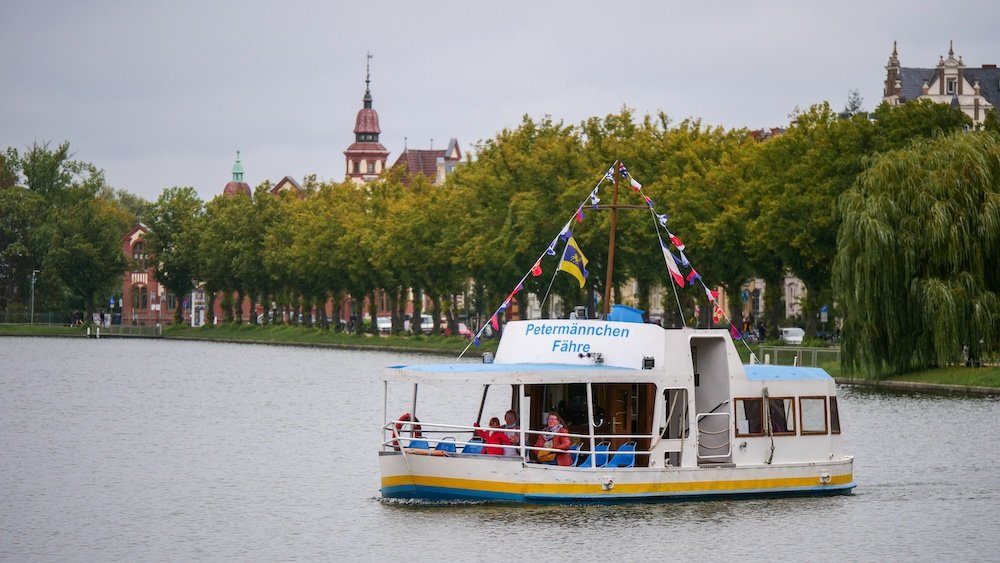
13) Boat Cruise on Lake Schwerin
With so many lakes around, a boat cruise is nearly mandatory. You’ll circle the main lake, passing castle views, forested shores, and possibly smaller islets. Some tours offer guided commentary about local legends, architectural feats, or ecosystem details. In warm weather, an upper deck seat plus a cold drink feels blissful. Photographers relish the chance to capture the castle from multiple vantage points on the water. It’s both relaxing and scenic—a top-tier thing to do in this travel guide.
- Cruises vary in length—some short loops, others extended with stops.
- Bring sunglasses; the water glare can be intense in midday sun.
- Tickets might be sold near the lakeside promenade or tourist info centers.
Tip: Check if sunset cruises are available—twilight reflections can be magical on calm waters.
14) Explore Museum Schwerin in the Former Palace Kitchen Building
Near the main castle complex stands a smaller building once housing the palace kitchens. Today, it often hosts special exhibits under the Museum Schwerin umbrella. The brick exterior and historical vibe remain intact, making for a unique exhibit space. You might find temporary art displays, archaeological finds, or cultural showcases. Fewer crowds here allow a peaceful exhibit stroll. It’s a deeper dive into local heritage beyond the standard castle museum.
- Inquire about rotating themes; sometimes they highlight baroque feasts or medieval cooking.
- Entry might be included with a combined castle ticket—confirm to save money.
- Photos are generally allowed, but watch for no-flash signage.
Tip: Seek staff insights—some docents know captivating kitchen tales of old feast preparations and ducal banquets.
15) Indulge in a Lakeside Picnic at Zippendorfer Strand
Zippendorfer Strand is a sandy lakeshore on Lake Schwerin’s eastern side. It offers mild beach vibes, picnic spots, and occasionally boat rentals. Summer sees families splashing in shallow waters, teens playing volleyball, or couples lazing under the sun. A kiosk might sell ice cream or snacks, fueling a relaxed midday break. The environment merges nature’s serenity with light recreational fun. Linger for a quiet stroll or a refreshing dip if weather cooperates.
- Bring a blanket or foldable chairs—benches can be limited.
- Watch for posted signs on swimming zones or water conditions.
- On weekends, locals host barbecues or small gatherings—friendly vibes abound.
Tip: Pack local pastries or cheeses from the city’s markets for a scenic picnic that merges gastronomic delight with lakeside tranquility.
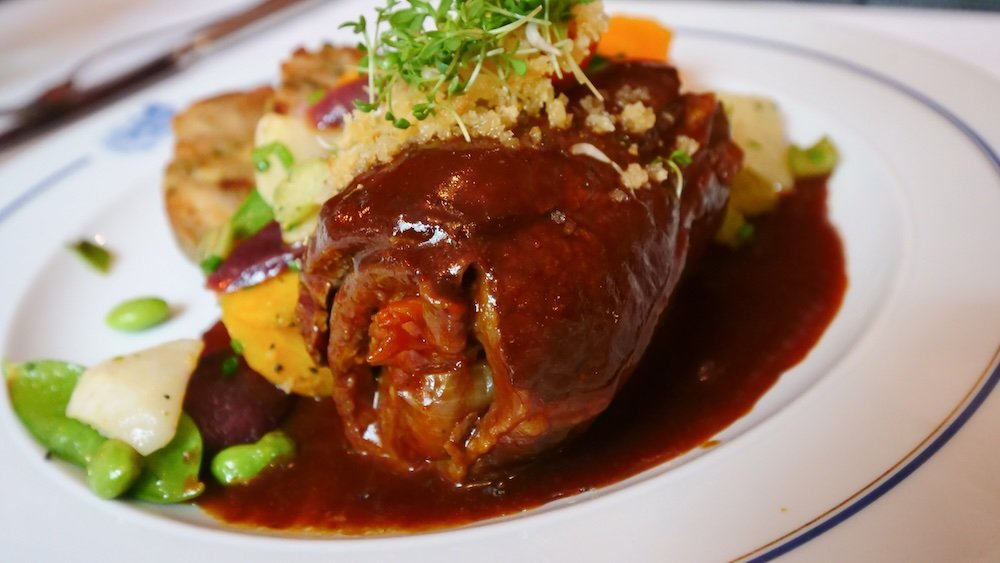
WHAT TO EAT AND DRINK IN SCHWERIN, GERMANY
Food Culture in Schwerin
Schwerin sits in Mecklenburg-Vorpommern, a region known for hearty dishes, fresh fish, and a cozy café culture. You’ll encounter a mix of rustic German fare and modern twists. Think comforting stews, crispy schnitzels, or fish specialties from local lakes. Meanwhile, the city’s slow pace fosters charming bistros and patisseries. Indulge in robust bread, sweet cakes, and a glass of local beer or perhaps a Mecklenburg cider.
Classic Dishes to Try
- Fischbrötchen: Fresh fish in a crusty bread roll, often herring or smoked fish with onions.
- Mecklenburgische Gänsesuppe: A traditional goose soup, hearty and perfect for cooler months.
- Rote Grütze: A red berry dessert, tangy and sweet, often served with cream or vanilla sauce.
These dishes root you in the region’s culinary heritage, blending lake produce and farmland traditions.
Bold Tip: Ask your server for seasonal specialties—some restaurants spotlight local fish caught that morning or fresh produce from nearby farms.
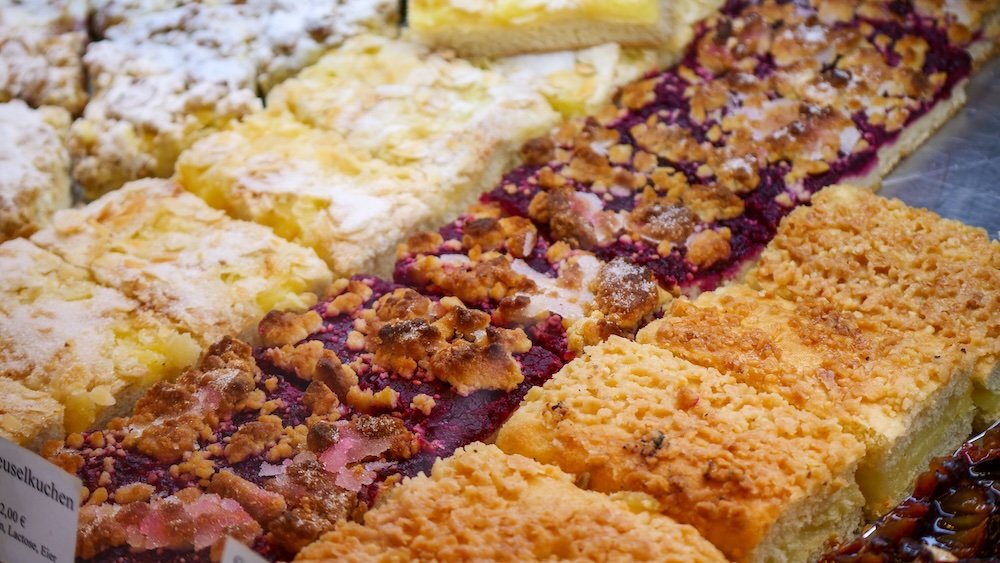
Local Cafés and Bakeries
Schwerin’s café scene can be surprisingly delightful. Tucked in old-town alleys or near lakesides, these spots serve up cappuccinos, pastries, and an array of cakes—apple strudel, Black Forest gateau, or fruit tarts. A slow afternoon coffee break is a local pastime, especially in scenic corners. Some cafés also double as bakeries, letting you snag fresh rolls for the next morning. Cozy interiors with wooden beams and potted flowers conjure a homely vibe.
- If you see plum cake or “Pflaumenkuchen” in autumn, it’s a must-try.
- Many cafes offer “Kaffee und Kuchen” deals in mid-afternoon—pure comfort.
- Look for local honey or jam used in pastries, tying farmland ingredients to city life.
Beer, Wine, and Other Drinks
Germany’s beer culture thrives here as well. You might find local brews from small craft producers or standard German pilsners. Some restaurants carry Mecklenburg craft beers or neighboring region specialties. If you prefer wine, ask for German whites or reds—Riesling or Spätburgunder might appear on menus. For non-alcoholic, fruit juices from orchard-rich states or herbal teas are widely available. Hard liquors are less common, though brandy or schnapps appear after mealtimes.
- Some breweries host tours or tasting nights—ask around if you want an immersive experience.
- Look for regional ciders in summer, pairing well with fish or light salads.
- Beer gardens by the lake might open in warmer months for alfresco sipping.
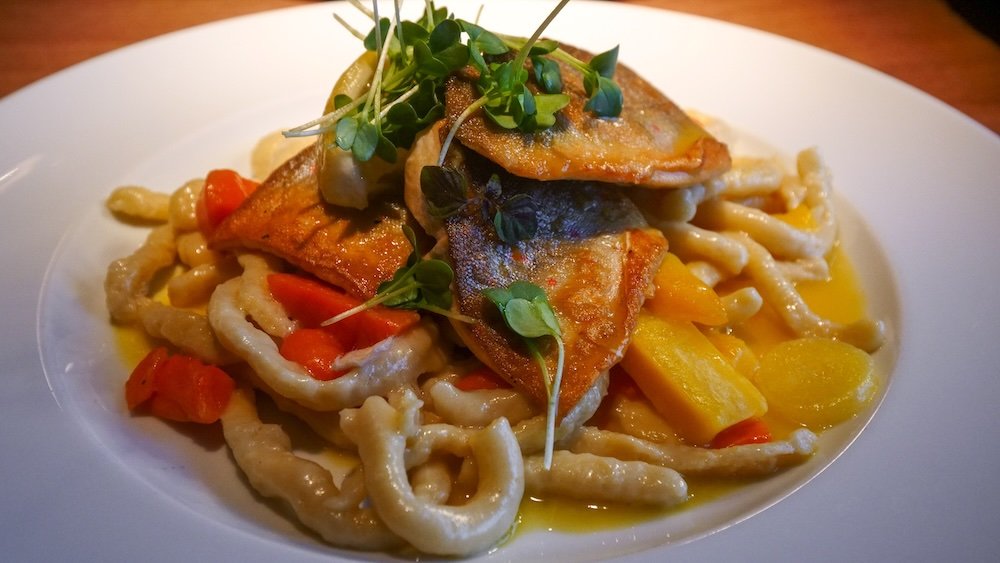
Finding International Cuisine
Though local fare is big, Schwerin also hosts pizzerias, Asian eateries, or bistros offering fusion plates. Don’t expect the big-city variety of Berlin, but you’ll find enough to keep different cravings at bay. Some spots near the city center cater to tourists with easy English menus, so no language barrier worry. If you desire a break from German classics, check out these alternatives. They can provide a gastronomic twist on your trip.
Tips for Dining Out
- Reservations: For dinner at popular spots or weekends, it’s wise to book in advance.
- Cash or Card: Some smaller places prefer cash—carry some euros.
- Tipping: Rounding up to the nearest euro or ~10% is standard.
- Time: Many restaurants close earlier than big-city hours, especially on Sundays.
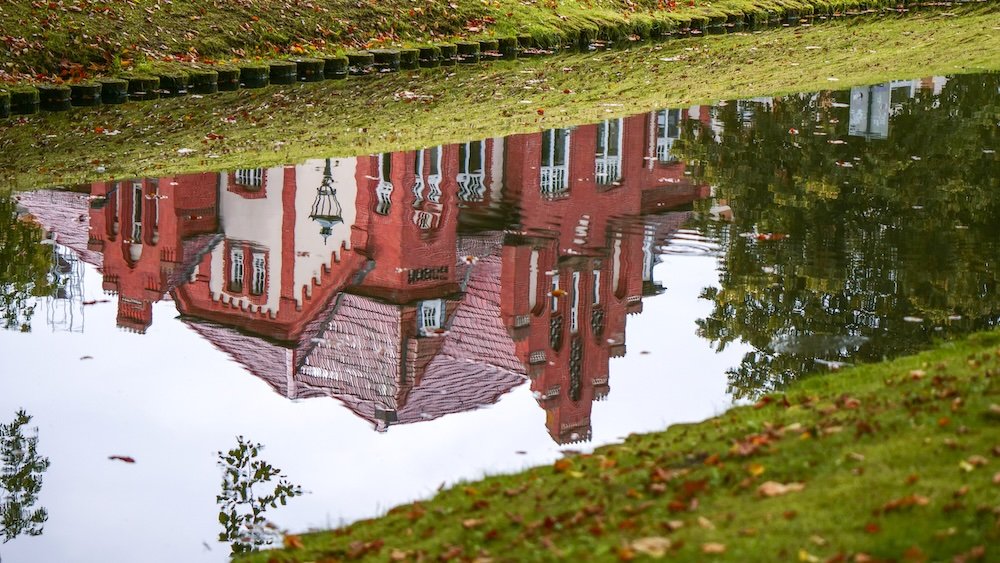
TOURS FOR VISITORS TO SCHWERIN, GERMANY
Why Join a Tour?
Even though Schwerin is relatively small, guided tours can illuminate hidden corners or lesser-known tales. A local guide reveals the city’s ducal past, architectural secrets, and anecdotal tidbits you’d never find in a brochure. If time’s tight, tours guarantee you won’t miss key highlights. Also, some tours bundle lake cruises or castle visits for a hassle-free experience. Let’s check out your options.
1) Historical Walking Tours
A walking tour around Schwerin’s Old Town is the simplest introduction. You’ll pass half-timbered houses, the majestic cathedral, and the market square where community gatherings happen. Guides typically share stories about dukes, medieval trades, or modern transformations. It’s interactive—feel free to ask about local quirks, best restaurants, or city myths. Some tours even include a short break at a café for a coffee or pastry. Perfect if you enjoy a paced stroll with historical context.
- Certain walking tours meet at the castle gates or city hall.
- Prices vary from tip-based to set fees—ask in advance.
- Tours often last 1–2 hours, covering major sights.
Tip: Wear comfy shoes—cobblestone can be slippery in wet weather.
2) Castle and Gardens Tours
Schwerin Castle alone warrants a special tour. Docents or professional guides lead you through grand halls, explaining ducal family lines, architectural upgrades, and the building’s shift to a parliamentary seat. They highlight room details, from gilded ceilings to antique furniture. Some also guide you through the gardens, elaborating on landscaping styles or hidden sculptures. This immersive approach helps you appreciate more than just pretty exteriors. By the end, you’ll sense the castle’s beating heart over centuries.
- Booking can be done online or via the castle kiosk.
- Some tours offer language options—English, German, maybe others.
- Photography rules differ by area, so clarify before snapping away.
Tip: Combine this with a museum or parliamentary visit for a full historical day.
3) Lake Cruises & Boat Tours
Surrounded by water, boat tours are popular. A typical route circles Lake Schwerin, offering panoramic glimpses of the castle, lush shorelines, and other small isles. Commentary might cover local lore, ecological aspects, or architectural tidbits. Some cruises serve drinks or snacks, letting you lounge on deck seats as you drift. Sunset trips can be especially enchanting, painting the horizon in pinks and golds. If you crave a laid-back vantage point, a lake cruise is your solution.
- Schedules vary by season—peak summer sees frequent departures.
- Some operators allow hop-on/hop-off near different lake piers.
- Shorter 45-minute loops suit those on tight schedules, while longer cruises delve deeper into hidden coves.
Tip: Arrive early for top-deck seats—perfect for unobstructed castle photos.
4) Bike Tours
For the energetic, a bike tour merges sightseeing with mild exercise. Local guides lead you on scenic paths around the city or along lake edges, stopping at vantage points. You’ll get tidbits about architecture, culture, and local flora. The gentle terrain around Schwerin suits riders of all levels—some minor hills, but mostly smooth. Fresh air, plus a bit of cardio, can rejuvenate a day of museum visits. Just watch out for traffic in busier zones.
- Check if tours supply helmets or you must bring your own.
- Morning rides can be cooler, with fewer pedestrians.
- Some tours wrap up at a beer garden or lakeside café—bonus for a post-ride refreshment.
Tip: Test the bike before you start—ensure seat height and brakes are comfortable.
5) Personalized / Private Guides
If you want absolute flexibility, private guides adapt to your interests. They’ll tailor routes, skipping places you find less compelling. Maybe you’re into photography, architecture, or local folklore. A personal guide can highlight specific aspects or plan around your schedule. It’s pricier but yields a deeper connection to Schwerin’s culture. Perfect for travelers wanting that custom, detail-rich experience.
- Ask for references or reviews—quality can vary widely.
- Align your focus (art, outdoors, history) with the guide’s expertise.
- Book early, especially during peak tourist months.
Tip: Discuss your priorities in advance—this ensures the guide prepares relevant stories or vantage points.
Booking & Practicalities
- Tour times: Mornings or afternoons? Some run multiple slots daily.
- Language: Many tours offer English, but smaller operators might only speak German.
- Group size: Larger groups cost less but can feel less personal. Private or small-group tours cost more yet give richer discussions.
- Duration: Decide if you want a short introduction (1 hour) or an in-depth exploration (2–3 hours).
- Weather: Bring an umbrella or jacket, as tours often proceed rain or shine.
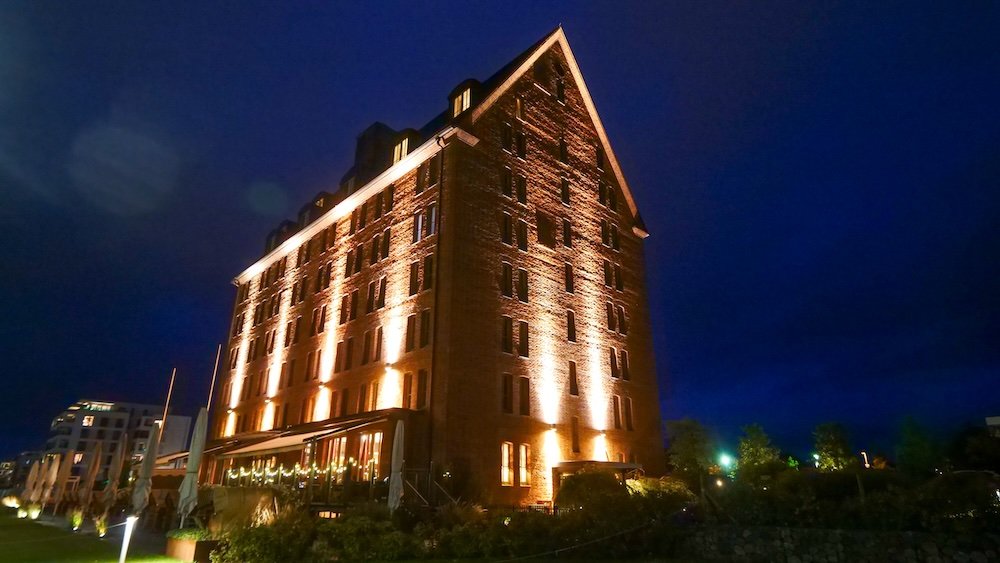
SCHWERIN ACCOMMODATIONS GUIDE: HOTELS, GUESTHOUSES AND HOSTELS
Overview of Lodging in Schwerin
While not as large as Berlin or Hamburg, Schwerin still hosts a variety of places to stay: boutique hotels near the castle, budget-friendly guesthouses in quieter neighborhoods, and a few hostels for backpackers. The city’s tranquil vibe extends to its accommodations, meaning you’ll find less hustle, more charm. Many properties highlight lake views or historical architecture. Let’s break down the main lodging styles so you pick your best fit.
1) Hotels with Lakeside Views
Some four-star or boutique hotels hug the shores of Lake Schwerin, offering balconies that overlook calm waters. Waking up to sunrise reflections can be magical, and these spots often have on-site restaurants, bars, or spa facilities. The convenience of strolling from your room to a lakefront path can’t be understated. Rates might be higher, but the serenity is worth it for many. If romance or relaxation tops your list, these might be your prime pick.
- Check if breakfast is included—some serve hearty spreads with local breads and cheeses.
- On-site parking is crucial if you’re driving—ask about availability.
- Lakeview rooms often cost more, so decide if that premium’s worth it.
Tip: Book well in advance for summer weekends—locals also snap up these scenic spots.
2) Central Boutique Hotels & Inns
For immediate access to the Old Town or castle zone, pick a boutique hotel near the city center. These smaller inns sometimes occupy historical buildings with quirky layouts—think wooden beams, winding staircases, or courtyard gardens. Each room can have distinct décor, from antique furniture to modern minimalism. The staff typically fosters warm, personal service. If you enjoy being steps away from cafés, shops, or evening strolls, a central boutique place resonates.
- Noise can creep in on weekends from nearby bars or foot traffic—pack earplugs if sensitive.
- Some older buildings might lack elevators—confirm if you need accessibility.
- Street parking might be limited, so research garages or pay-lots.
Tip: Check if they have “Romantik” or “Historic” labels—German hotel associations sometimes highlight these categories for extra charm.
3) Guesthouses and B&Bs
Guesthouses (Pensionen) or B&Bs pepper residential neighborhoods, offering homier experiences. You might share a common lounge or breakfast area with other travelers. Hosts can be chatty, suggesting local restaurants or lesser-known hiking trails. Rates are moderate, and the vibe is relaxed. If you prefer laid-back comfort and local tips over chain-hotel anonymity, go this route.
- Rooms vary in size—some have shared bathrooms, so read descriptions carefully.
- Breakfast is often homemade or sourced from local farms—fresh bread, eggs, jam.
- Communication might be mostly in German, but gestures and a friendly smile go far.
Tip: Ask your host about local markets or events—they often know hidden gems.
4) Hostels for Budget Travelers
For backpackers or students, hostels in Schwerin are fewer but do exist. Dorm beds or simple private rooms come cheap, letting you funnel savings into day trips or better meals. Communal kitchens help if you want to cook. Expect a cozy, smaller crowd than in big-city hostels. This fosters a friendlier atmosphere, though check reviews for cleanliness or locker availability.
- Since hostels are limited, they can fill up quickly in peak season.
- Some are near bus stations or outside the center—research transit options.
- Chat with fellow travelers in lounge areas for shared day trip ideas or group tours.
Tip: Bring your own lock if they have open lockers—always wise to secure your belongings.
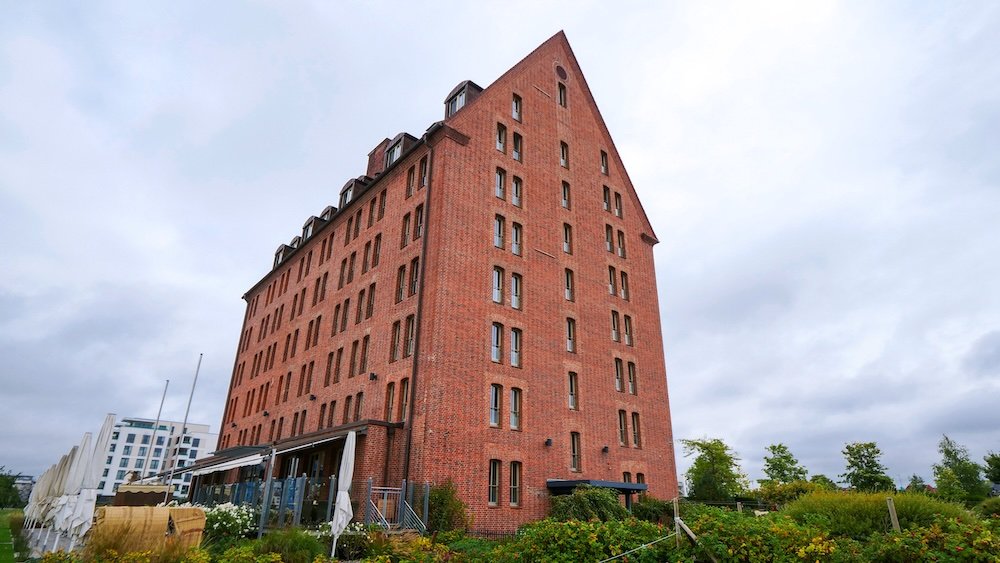
5) Booking Tips
- Seasons: Summer draws more travelers, so consider shoulder seasons (spring/fall) for deals.
- Online Ratings: Check aggregator sites or local tourism pages for updated property reviews.
- Promotions: Some hotels do weekend packages, pairing lodging with boat tours or museum tickets.
- Cancellation: Double-check policies—some small inns have stricter rules.
- Breakfast: If you’re an early riser, ensure their breakfast hours align with your plans.
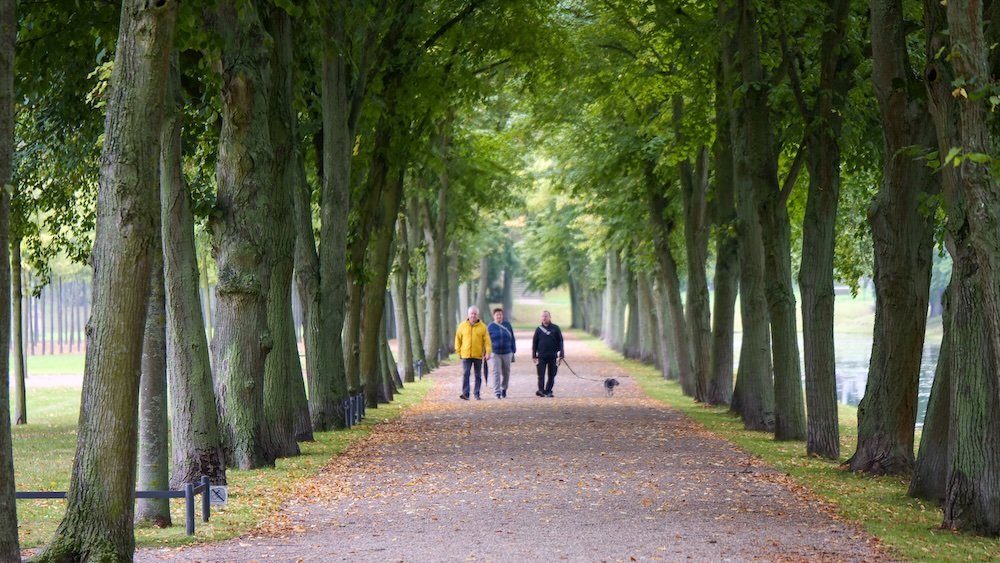
DAY TRIPS FROM SCHWERIN, GERMANY
Why Consider Day Trips?
Schwerin itself brims with things to do, but the broader region extends your horizons. Northern Germany’s lakes, coastlines, and cultural hubs are all within easy reach. Day trips let you roam bigger cities or scenic gems, then return to Schwerin’s calm each evening. Whether you crave bustling ports or more castle exploration, options abound. Let’s spotlight a few favorites.
1) Rostock & Warnemünde on the Baltic Coast
About an hour’s train ride away, Rostock offers Hanseatic flair with gothic architecture, maritime history, and a lively university vibe. Stroll the old town’s brick churches and stroll past medieval gates. Then pop over to Warnemünde, Rostock’s seaside district boasting a wide beach and iconic lighthouse. Fish sandwiches by the harbor taste divine, especially when you watch fishing boats chug in with daily catches. A day here merges city culture and breezy Baltic relaxation.
- Check local events; Rostock sometimes hosts festivals celebrating maritime heritage.
- Warnemünde’s beach can get crowded in peak summer—arrive early if sunbathing.
- Ferries or tours may run along the coast for scenic vantage points.
Tip: Buy a Mecklenburg-Vorpommern day ticket if traveling by train; it often covers unlimited rides regionally.
2) Lübeck’s UNESCO Old Town
Lübeck, around 90 minutes from Schwerin by train or car, dazzles with red-brick gothic architecture. Its old town sits on a small island, ringed by rivers and brimming with medieval spires. Famous for marzipan, the city features cafés where you can indulge sweet treats. Explore the Holstentor gate, step inside grand churches like Marienkirche, or meander charming alleys. The atmosphere merges historic majesty with a modern arts scene. A perfect day trip for architecture and sweet tooth cravings.
- Marzipan shops sometimes offer free samples—score!
- The city’s Hanseatic Museum illuminates maritime trade roots.
- Walk by the canals at dusk for serene reflections of church towers.
Tip: Grab a marzipan-laden pastry at Café Niederegger to get the full Lübeck effect.
3) Wismar’s Maritime Charm
Wismar, another Baltic coast gem, is around 40 minutes away by train or car. Its UNESCO-listed old town features brick gothic churches, old merchant houses, and a scenic harbor. The Marktplatz is one of Germany’s largest squares, lined with pastel buildings and an elegant Wasserkunst fountain. Walk the harborfront for briny breezes, maybe sampling a fresh fish roll. The vibe is relaxed yet historically rich. Ideal if you want a smaller, cozy version of a Hanseatic city tour.
- Some beer lovers head to the Wismar Brewery for local craft sips.
- Keep an eye out for gabled houses with intricate facades.
- The old town’s labyrinth can reveal hidden courtyards—embrace spontaneous wandering.
Tip: Check ferry schedules to Poel Island if you want an extra coastal bonus.
4) Güstrow’s Barlach Art & Renaissance Castle
Güstrow is a lesser-known retreat about an hour’s drive or train from Schwerin. The highlight is the Renaissance castle plus the Ernst Barlach museums celebrating the German expressionist sculptor. Peaceful town lanes, a scenic lake, and half-timbered houses complete the scene. Many visitors find Güstrow less touristy, offering a genuine local vibe. Art buffs especially appreciate Barlach’s emotive sculptures scattered across multiple museums. If you prefer low-key cultural immersion, Güstrow is a gem.
- The Güstrow Castle’s courtyard sometimes hosts summer concerts.
- Cafe culture is cozy; treat yourself to coffee and German pastries.
- Explore the old town on foot—distances are small, with signage in both German and English.
Tip: Plan around 3–4 hours if you want thorough museum visits plus a lunch break.
5) Hamburg for a Big-City Burst
If you’re itching for a major metropolis, Hamburg is under two hours away by train. Northern Germany’s largest port city enthralls with the Elbphilharmonie, UNESCO Speicherstadt, and Reeperbahn nightlife. Contrasting with Schwerin’s calm, Hamburg’s urban pulse roars. You can tour the harbor, devour fresh fish in the Landungsbrücken, or admire modern architecture in Hafencity. Returning to Schwerin in the evening feels like stepping back into a fairytale after a day in a big city swirl.
- Hamburg has countless museums—Maritime, Miniatur Wunderland, etc.
- Big events like Hamburg DOM carnival might coincide—check the calendar.
- Use a day pass for local public transport, including ferries on the Elbe.
Tip: Start early—Hamburg’s so big you’ll want maximum time to sample the harbor, city center, and maybe Reeperbahn by dusk.
Logistics for Day Trips
- Transport: Regional trains (Deutsche Bahn) or local buses connect these destinations. Check schedules online or at the station.
- Timing: Aim for early departures to maximize exploration hours.
- Tickets: Some regional day passes let you hop between towns cheaply—research before purchasing single tickets.
- Weekends: Some shops or attractions close on Sundays in smaller towns, so plan accordingly.
- Weather: The Baltic region can be windy or rainy—pack layers or an umbrella.
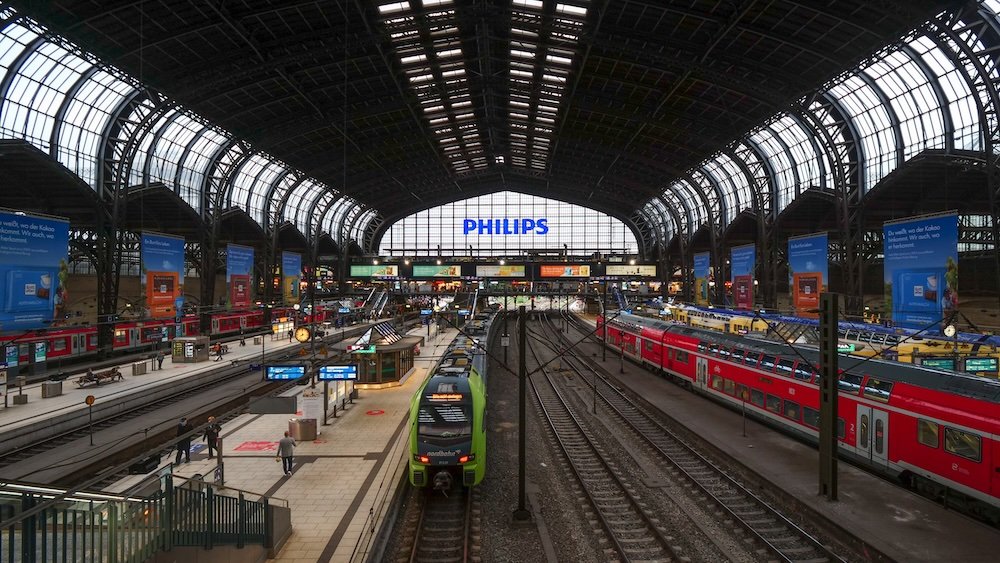
SCHWERIN TRANSPORTATION GUIDE
Getting into Schwerin
By Train: The Deutsche Bahn network links Schwerin with Hamburg, Berlin, and beyond. Main station “Schwerin Hbf” sits near downtown, letting you walk or bus to your accommodation. By Car: Several highways connect Mecklenburg-Vorpommern, though driving in older city areas might be tight or pay-to-park. By Bus: Long-distance buses also arrive from major German hubs, though less frequent than trains. Research your approach to ensure a smooth arrival.
- Book regional train passes if you plan multiple city visits.
- Timetables: Use the DB Navigator app for accurate departure times.
- If driving, check for city center restrictions or environmental badges.
Local Buses & Trams
Schwerin’s public transit includes buses and a small tram network. They handle key routes, from central station to outlying neighborhoods. Frequency is decent in daytime, thinning at night. Tickets can be purchased via machines, bus drivers, or local kiosks—some may only accept cash. If your plan includes repeated rides, consider a day pass. Overall, distances are short, so you might walk a lot, but having a bus/tram option is handy in bad weather.
- Note that the tram lines primarily serve certain corridors near the city center.
- Validate your ticket once on board—inspectors sometimes check.
- Download local transit apps for timetables if you prefer smartphone convenience.
Tip: Study your route in advance—English signage might be limited, so knowing bus/tram numbers helps.
Biking Around
If you enjoy fresh air, biking in Schwerin is quite pleasant. The city’s relatively flat, though some roads near the castle might have mild slopes. Lakeside paths offer scenic routes away from traffic. Local shops rent bicycles, typically by the day. Observing traffic rules is crucial—use designated bike lanes when possible. With short commutes, a bike can be your main transport if weather permits.
- Bring a lock if renting—some scenic spots might tempt you to park and wander on foot.
- Wear reflective gear or have lights if biking after dark.
- Some guesthouses/hotels loan bikes free—ask at reception.
Tip: Check the official tourism site for recommended bike trails, merging nature loops with city stops.
Driving & Parking
If you’ve rented a car to roam Mecklenburg’s broader region, driving in Schwerin is feasible. Traffic is lighter than big German cities, though old town alleys can be narrow. Street parking or pay-lots near major attractions handle visitors. Watch out for one-way streets around the castle zone. Driving helps day-trip flexibility, but for pure city exploration, you might find a car optional—public transit or walking suffices.
- Car-free or pedestrian zones exist near historical areas.
- Parking fees can vary—some machines require coins, so carry small change.
- GPS helps, but keep an eye on local signage—some streets might be blocked for events.
Tip: Avoid rush hour (7–9 a.m., 4–6 p.m.) if you want stress-free navigation and minimal downtown congestion.
Water Transport
While not as extensive as Venice or big port cities, boat ferries or lake tours function in tourist seasons. They connect central piers to certain neighborhoods or smaller lakes. It’s more for leisure than daily commuting, but if you fancy watery routes, it’s a scenic alternative. Timetables revolve around popularity, usually in warmer months. If your lodging is near a lakeshore, see if a boat shuttle is an option.
- Check posted schedules at piers—some run hourly, others just thrice a day.
- If windy or rainy, rides might be canceled or limited.
- Tickets can be purchased onboard, but bring cash.
Tip: Combine water transport with city sightseeing—some lines drop you near the castle or old town for easy integration.
Transport Tips Recap
- Tickets: Buy from machines or drivers (buses), day passes might save money.
- Apps: DB Navigator for trains, local apps for bus/tram timetables.
- Walking: Short distances make strolling feasible for many attractions.
- Night: Fewer bus/tram rides operate late, so plan a taxi or walk if you’re out after midnight.
- Language: Minimal English signs, so note “Hbf” for main station, “ZOB” for bus station, etc.
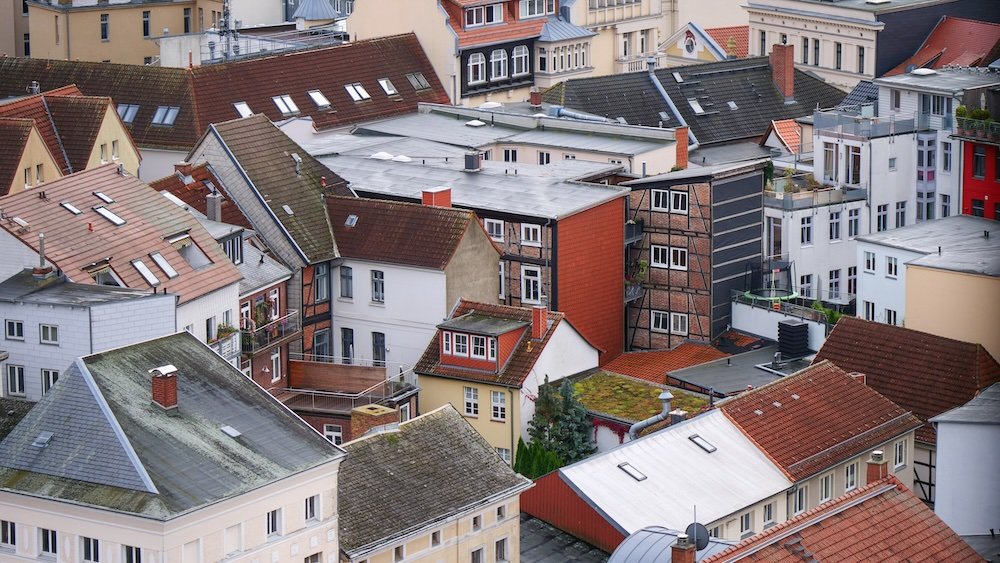
SCHWERIN TRAVEL GUIDE: FINAL THOUGHTS
Schwerin radiates a fairytale-like aura, shaped by its regal castle, serene lakes, and a gentle pace that welcomes you to slow down. You’ve seen how things to do here extend beyond mere castle tours: strolling the Old Town, enjoying quiet gardens, exploring museums, sampling local baked treats, or boating on placid waters. Each corner unearths fresh joys—maybe it’s the hush of an early morning along Pfaffenteich, or the lively hum of an evening concert at the Mecklenburg State Theatre.
Embracing the Slower Rhythm
Unlike big German metropolises, Schwerin doesn’t rush you. Instead, it nudges you to linger at lakeside benches, savor a hearty meal at a rustic inn, or take a moment to truly absorb art in a small museum. That slower rhythm can be a refreshing reset, especially if you’re used to frantic city travels. Let it anchor you: a city meant for deeper, unhurried connections.
Weaving History and Nature
Historic buildings reflect centuries of ducal power, while lush parks and shimmering water shape the city’s identity. The castle stands as a symbol of continuity, bridging medieval times with modern democracy. Meanwhile, the surrounding lakes invite a sense of calm, fueling the city’s green soul. That interplay—glorious manmade structures and soothing natural beauty—makes Schwerin distinct. You can explore a baroque hall in the morning, then kayak or take a boat cruise in the afternoon.
Practical Highlights
You’ve also gleaned how to structure your trip. Day trips to Rostock, Wismar, or Hamburg expand your vantage if you crave a coastal or big-city detour. Local flavors—Fischbrötchen, comforting soups, or decadent pastries—reflect the region’s farmland-lake synergy. Public transport is easy enough for short distances, with trains linking you to broader Germany. Even if you only allocate a weekend, you’ll taste a balanced slice of this enchanting city.
Remember that Schwerin’s charm can’t be fully captured in a single day. It’s a city that reveals itself slowly—a steady unveiling of hidden vantage points, centuries-old traditions, and tranquil corners. If you have time, linger a bit longer. If you must move on, keep it in mind for a revisit. Safe travels—enjoy your exploration of Schwerin!
